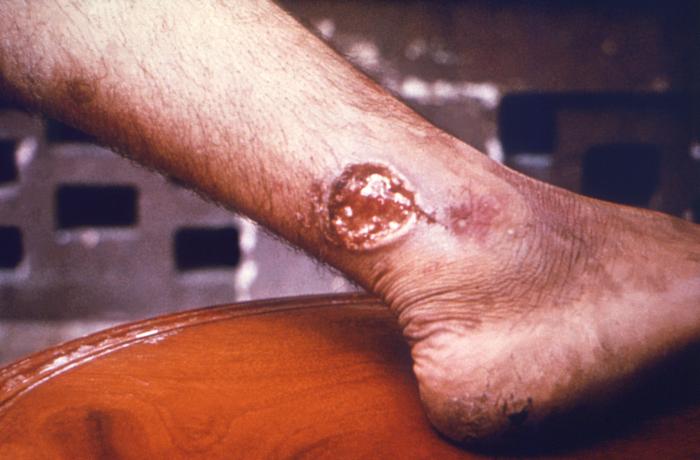No, this is not a question for Gary Johnson, or any other Presidential hopeful.
But for the thousands of people afflicted with this parasitic disease in Syria and elsewhere in the Middle East, they could surely answer the question.

As Dr Peter Hotez once wrote, “One of the least known consequences of modern conflict in the Middle East and East Africa has been the widespread devastation that results from a tropical infection known as leishmaniasis.”
In the ancient northern Syrian city of Aleppo, “Old World” cutaneous leishmaniasis (CL) [one form of the parasitic infection], or Aleppo Evil, Aleppo Boil and several other names it goes by, has been endemic for more than two centuries.
However, now due to horrible conflict in the region, Aleppo Evil is affecting hundreds of thousands of people living in refugee camps or trapped in conflict zones.
LISTEN: Old World cutaneous leishmaniasis outbreak in conflict zones: An interview with Dr Peter Hotez
According to a 2015 Independent report: Syria’s healthcare system has been devastated by almost four years of conflict. More than half of the public hospitals in the country – previously a regional leader in healthcare – are closed or only partially functioning, leaving some patients forced to travel up to 100 miles to the nearest hospital.
Cutaneous leishmaniasis is transmitted through the bite of an infected female phlebotomine sand fly.
It is characterized by skin lesions, which typically develop within several weeks or months after exposure. In some people, the sores first appear months or years later, in the context of trauma (such as skin wounds or surgery). The sores can change in size and appearance over time. They typically progress from small papules to nodular plaques, and often lead to open sores with a raised border and central crater, which can be covered with scales or crust. The lesions usually are painless but can be painful, particularly if open sores become infected with bacteria.
It typically lasts one or two years before the lesion heals spontaneously. The disfiguring scars can result in social stigmatization and have psychological consequences.
According to the Centers for Disease Control and Prevention (CDC), decisions about whether and how to treat CL should be individualized, including whether to use a systemic (oral or parenteral) medication rather than a local or topical approach.
Related:
- Dr. Peter Hotez discusses his new book, ‘Blue Marble Health’
- Chagas, leishmaniasis and sleeping sickness cured with one drug? Researchers get a little closer
- Leishmaniasis drug, Impavido, gets FDA nod


2 thoughts on “What is ‘Aleppo Evil’?”